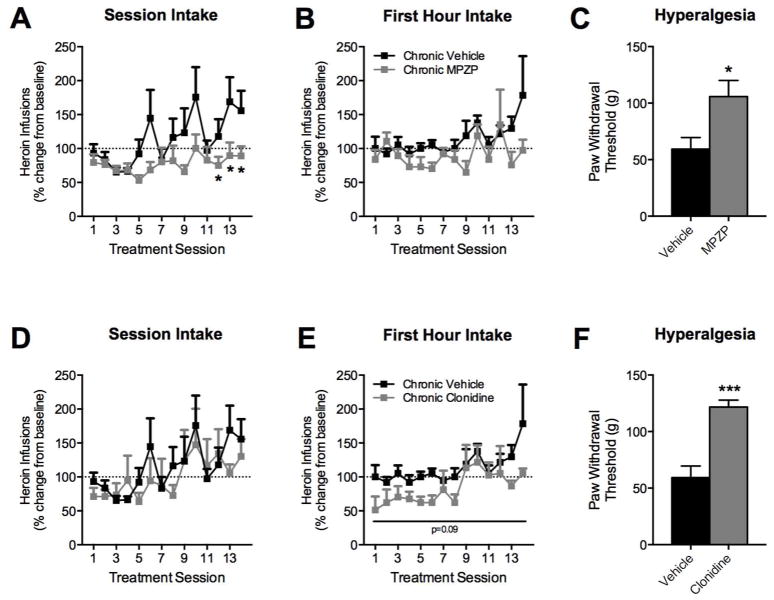Figure 4.
Chronic CRF1R antagonism prevents escalation of heroin self-administration and resultant hyperalgesia. Rats were trained to lever press for heroin and split into three groups (n = 6 each) receiving repeated treatments of vehicle, MPZP, or clonidine prior to each eight-hour self-administration session. Heroin intake is expressed as percent change from chronic vehicle-treated animals on treatment day one. Paw withdrawal thresholds were measured 10–12 h following the last heroin self-administration session (approximately 18–20 h after the last drug treatment). Over 14 treatment sessions, vehicle-treated rats displayed a gradual increase in heroin intake over the entire session that significantly diverged from the chronic MPZP-treated rats by the end of the training (A–B). A significant difference between vehicle and MPZP groups was present on days 12, 13, and 14. (* p < 0.05). Animals treated chronically with MPZP also displayed higher paw withdrawal thresholds, reflecting an absence of heroin-induced hyperalgesia (C). In comparison, heroin self-administering animals treated chronically with clonidine did not display a significant difference in intake from the vehicle group across the entire eight-hour session (D) but did exhibit a trend (p = 0.09) for decreased heroin intake over the first hour of self-administration (E). Despite similar heroin intake levels between groups, clonidine-treated animals exhibited higher paw withdrawal thresholds (F), suggesting a reduction of heroin-induced hyperalgesia in this group relative to animals receiving chronic vehicle treatments.

